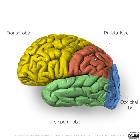Galassi classification of middle cranial fossa arachnoid cysts
The Galassi classification of middle cranial fossa arachnoid cysts is used to classify arachnoid cysts in the middle cranial fossa, which account for 50-60% of all arachnoid cysts . Galassi et al. published this classification in 1982, and at the time of writing (June 2016), it remains the most widely used system for these lesions.
It is a simple system, using the size and degree of displacement of the adjacent brain to divide cysts three types. The size also correlates with the ease with which the cyst communicates with the subarachnoid space as discerned on CT cisternography or phase contrast MRI .
Classification
- type I
- small, spindle-shaped
- limited to the anterior portion of the middle cranial fossa, below the sphenoid ridge
- free communication of subarachnoid space
- type II
- superior extent along the Sylvian fissure
- displacement of the temporal lobe
- slow communication with subarachnoid space
- type III
- large
- fills the whole middle cranial fossa
- displacement of not only the temporal lobe but also the frontal and parietal lobes
- often results in midline shift
- little communication with subarachnoid space
Siehe auch:
und weiter:

 Assoziationen und Differentialdiagnosen zu Galassi classification of arachnoid cysts:
Assoziationen und Differentialdiagnosen zu Galassi classification of arachnoid cysts:

